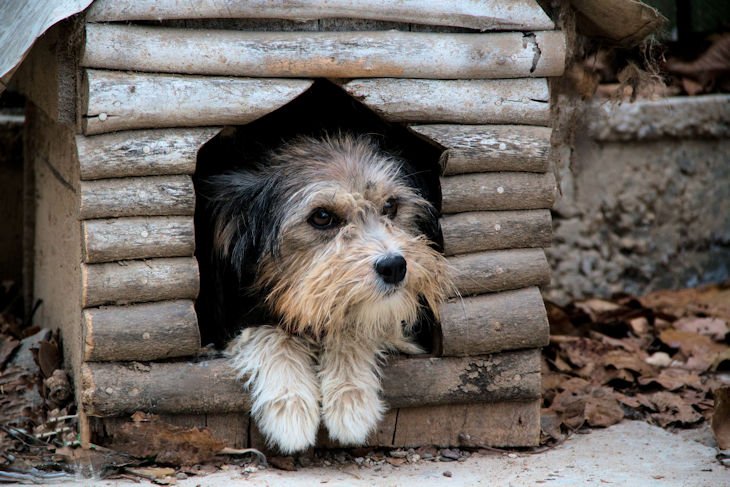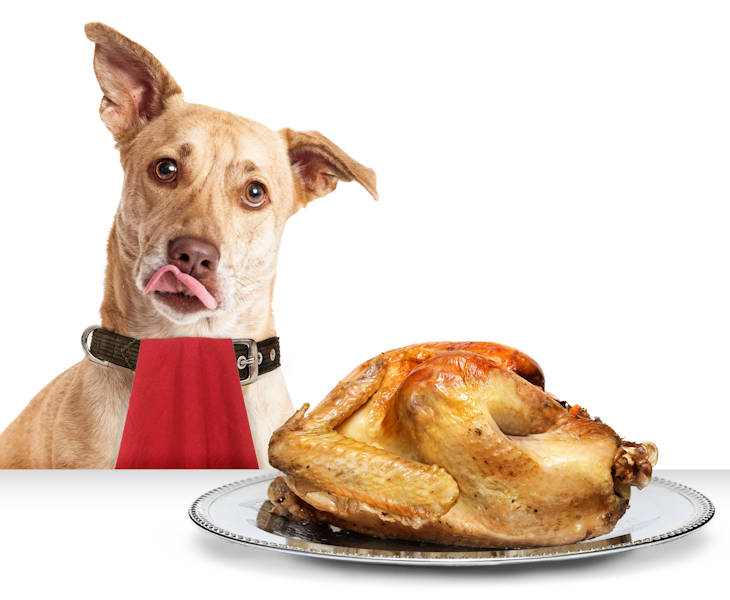Bringing a New Dog Home
First things first, pick a neutral and calm location for the initial meeting. This could be a park or a quiet area where neither dog feels territorial. Before the big day, make sure both dogs are up to date on their vaccinations and are in good health. Safety first, right?
When you're ready to meet, keep both dogs on leashes initially, allowing them to see each other from a distance. This gives them a chance to sniff around and get familiar with each other's scent. Keep the leashes loose and stay relaxed yourself. Your calm demeanor will reassure them that everything's cool.
As they start to show curiosity without aggression, you can let them approach each other more closely. Still, maintain those loose leashes, just in case. Watch their body language – wagging tails, relaxed ears, and play bows are positive signs. If either dog seems tense, give them more space and try again later.
Once things seem to be going well, you can take them for a short walk together. Walking side by side can create a sense of camaraderie. Remember to reward them with treats and praise for good behavior throughout the process. Positive associations work wonders!
And hey, don't rush it. Building a strong bond takes time. Allow them to have separate spaces for a while, ensuring both dogs have their own comfy spots and personal belongings. Over time, their relationship will hopefully blossom into a beautiful friendship.
So there you have it, a laid-back approach to introducing your new pup to your old pal. Patience, positive vibes, and a sprinkle of treats – you've got this!
Dogs, Cats and Cannabis

As cannabis use becomes legal in more states, I thought it would be a good time to take a look at the potential dangers and health risks for your pets if they gets into your stash of cannabis flower or edibles. Because of the endocannabinoid system, a biological system in the body that helps regulate and balance key bodily functions, cannabis affects dogs and cats differently than humans and it can lead to toxic reactions. Here are some of the dangers:
- Toxicity: Dogs and cats are more sensitive to the psychoactive compounds in cannabis, like THC (tetrahydrocannabinol). Ingesting cannabis can lead to THC toxicity, causing symptoms such as lethargy, unsteadiness, vomiting, diarrhea, tremors, and in severe cases, seizures and coma.
- Increased Heart Rate and Blood Pressure: Cannabis can lead to an increase in heart rate and blood pressure, which may be harmful, especially for dogs and cats with pre-existing heart conditions.
- Respiratory Problems: Inhaling cannabis smoke can irritate your pet’s respiratory system, leading to coughing and difficulty breathing.
- Loss of Coordination: Your pets may lose their coordination and balance, making them more prone to accidents and injuries.
- Central Nervous System Depression: In larger quantities, cannabis can cause depression of the central nervous system, leading to potential loss of consciousness.
- Unpredictable Reactions: The effects of cannabis can vary widely from one pet to another, making it challenging to predict how a particular pet will react to the substance.
- Hypothermia: Cats and dogs exposed to cannabis can experience a drop in body temperature, leading to hypothermia, especially if they become lethargic and unable to regulate their body heat properly.
- Longer-lasting Effects: The effects of cannabis can last longer in pets compared to humans, leading to prolonged discomfort and symptoms.
If you suspect that your dog or cat has ingested cannabis, it's crucial to seek immediate veterinary care. Even small amounts of cannabis can be dangerous, so prompt treatment is essential.
To prevent such incidents, always keep cannabis products and edibles safely stored out of reach of pets, and be cautious when consuming them around animals to avoid accidental ingestion. Responsible cannabis use and proper storage are essential to keep your pets safe.
Outdoor Winter Hazards

Western Massachusetts is a great place to live if you like a variety of winter sports and activities. From skiing to skating to playing hockey outside on a frozen lake, there are so many things to do to enjoy the cold weather and the snow. But while we’re enjoying all that winter has to offer, we need to keep in mind that our pets don’t always have the same protections from the elements that we humans have.
Housing. If your dog or cat primarily lives outdoors, it’s imperative to give them a warm and safe place to live. Heated and insulated dog and cat houses can be purchased on Amazon, Chewy, or even on Etsy. When looking for a winter dog or cat house, look for one with a raised doorway so rain or snow doesn’t get in the enclosure as easily. Look for one with a door covering such as heavy burlap or a thick sheet of plastic to keep out the wind.
The house should be insulated and not too large. It should be large enough for the dog or cat to move around in comfortable but small enough so that his body heat can warm the area. Use straw, not hay, for flooring/bedding in the house. You can buy straw at farm supply stores and pet stores. Hay is usually used for feed and will end up getting wet and cold and may mold, so be sure to purchase straw instead.
You can also purchase self-warming beds/pads for your outdoor pets which are made out of materials that use your dog or cat’s body heat and then radiates that back to your pet. For colder climates, you can get heated beds for your cat or dog. Either of these can be purchased at your local pet supply store or on Amazon.
Alley Cat Advocates have instructions on how to make your own cat shelter out of a Styrofoam cooler or a plastic bin such as a Rubbermaid storage container for your own outdoor cat or stray cats in your neighborhood that don’t have humans to watch out for them.
Food and water. Animals who mainly live outdoors need more food in the winter than their indoor counterparts because it takes energy to stay warm. Besides heated bowls, there are other things you can do to help out your outdoor pet. Use plastic bowls instead of metal bowls. Your pet’s tongue can stick and freeze to metal in cold weather. Check water bowls frequently so they don’t freeze over. Use deeper bowls rather than wide bowls. Consider feeding canned food instead of dry food since your cat or dog will expend less energy digesting the canned food. Warming pads under the food and water bowls can help keep them from freezing.
Dog walks. Your dog probably LOVES going for walks and who can blame them with all the new things to smell and places to pee? But winter has its own challenges when it comes to dog walks.
Like it is for humans, wind chill can be dangerous for our pets. If you have a dog with a thick undercoat like German Shepherds, Great Pyrenees, and Huskies, the wind probably won’t bother them much on your walks. But short haired dogs and small dogs may be much more comfortable wearing a jacket or a sweater to fend off the wind.
Will your dog tolerate wearing boots? CONGRATULATIONS if she will. Mine, not so much. Just the act of trying to put boots on my big girl, Stella, tires me out to the point that once they’re on I’m ready for a nap instead of a walk. (And she’s too busy trying to tear them off to go on a walk.) She doesn’t care that boots help to protect paws from frostbite or from ice melt chemicals or rock salt that may stick to her paws that she is likely to lick off later. We keep walks short to guard against frost bite on her paws and to ensure that she doesn’t ingest chemical ice melt by licking it off her paws, the first thing to do at the end of a walk is to carefully wipe her paws with a damp cloth.
Of course this isn’t a comprehensive list of the dangers facing pets in the winter, but it’s a starting point to start thinking about how to keep your dog or cat safe this winter.
Be their voice. If you see an animal that is spending long periods of time outdoors without adequate shelter or food and water, politely speak to the owners. They may not understand the dangers of sustained freezing temperatures to animals who live outdoors. If that’s not an option or you feel it wouldn’t be safe to do so, the Humane Society of the United States has a helpful web page with steps you can take to get help for that animal. What to do if you see a pet left out in the cold
Stay safe while you’re enjoying all the fun winter activities that are in store for you and your pets this year!
Foods Dogs Should Avoid

When I was growing up, back in the dark ages, my first dog was an outdoor dog. He lived outdoors and came in rarely, mostly when the weather was freezing. Now when I look back at those days, I marvel at how much things have changed. My dogs not only live inside with the family, they share our furniture and our beds. Whether or not sharing a bed is a good idea, that’s another blog post for another time. In my house, we treat our dogs as family members and like to share the experiences of the holidays with them. That includes feasting, right? Well, that’s something we should definitely think twice about.
Many foods that humans eat not only aren’t good for dogs, they can be quite harmful. For instance, I think we all know that chocolate, which is found in most homes this time of year, can be poisonous for dogs. Chocolate contains theobromine which is similar to caffeine and can cause increased blood flow to the brain. Can it cause death in dogs? Yes, but few dogs actually consume that much. But even in smaller amounts it can cause symptoms such as vomiting, diarrhea and a racing heart rate. In higher amounts, seizures, tremors or heart failure can result. The darker the chocolate, the higher the theobromine levels. If you have a mixed household with both dogs and cats, theobromine is even more toxic to cats.
Onions, and the rest of the onion family (garlic, leeks, shallots and chives) are also on the list of items not to feed to dogs. Relatively small amounts of onion, raw or cooked, can cause big problems for dogs. For instance, a 45 pound dog, according to the American Kennel Club, would only have to consume one medium to large onion to experience dangerous toxicity levels. Onion powder and garlic powder are even more potent in N-propyl disulfide, the compound in onions and other alliums the can lead to anemia in dogs and cats. Symptoms of toxicity caused by onions include vomiting, lethargy, pale gums and fainting. If you suspect onions have been ingested by your animals, contact your veterinarian right away. Within four hours of ingestion, your veterinarian may want to induce vomiting to get rid of as much of the harmful components as possible. After four hours, it is likely already absorbed into your dog’s system and the treatment is different, changing to a supportive therapy to counteract the damage to red blood cells instead of trying to keep the damage from happening in the first place.
So what about roast turkey now that Thanksgiving is almost here? Turkey is often a main ingredient in dog food and is perfectly safe for dogs to eat, with some caveats.
* Make sure it is cooked WITHOUT other ingredients. Turkey cooked with onions, garlic and other seasonings should be avoided since those ingredients can cause stomach upset, or worse, in large quantities, as mentioned above.
* Turkey skin, even without spices and seasonings is quite fatty and dogs can develop pancreatic issues when they eat a diet high in fat.
* Be very vigilant that all the bones have been removed from the turkey you feed to your dog and that the pieces of turkey are bite sized.
* Most importantly, don’t overfeed your dog.
The holidays can be a great time of year for both the human members and the four-legged members of your family as long as you keep in mind that human foods aren’t always a safe option for your dogs and cats.
TNR: What Is It?
Trap-Neuter-Return, or TNR refers to a method of attempting to control feral cat populations by humanely trapping community cats in box traps, having them spayed or neutered (and vaccinated against rabies), and then returned to their original environment once they have recovered from surgery. TNR cats are also commonly eartipped, which indicates to others that they have been neutered and vaccinated. If young or friendly (“adoptable”) cats are recovered during the TNR process, they may be transferred to a foster home or shelter to be put up for adoption. While vaccination isn’t a requirement, it is considered best practice, and you will often see the term “Trap-Neuter-Vaccinate-Return” or TNVR instead. Regardless, the idea is that the size of the colonies will decrease over time as its inhabitants are unable to reproduce.
TNR has been gaining traction and popularity, and with good reason. Its proponents argue that it is far more effective (and humane) than the catch-and-kill approach of old. In addition to the obvious cruelty of killing homeless cats, doing so only creates a vacuum in that environment, which new cats will soon discover and fill as they look for available resources. Shelters are largely underfunded and overburdened, and simply cannot take on the additional strain of more homeless cats, many of which have had limited human interaction and are very difficult to adopt out.
There are also advantages to the TNR approach from a behavioral perspective. Once the possibility of mating is reduced or eliminated, nuisance behaviors associated with mating, such as fighting, yowling, spraying, marking territory, and even roaming in search of a mate, noticeably decrease. Some argue that the cats are healthier overall once they are fixed and vaccinated, and as an added bonus, because the cats remain in their environment, they continue to keep rodent populations in check. Finally, many TNR programs include long-term care of the cat colonies as part of their protocols.
So does it work? Best Friends Animal Sanctuary cites several case studies that make a good argument for its efficacy. Communities that report a successful outcome after implementing TNR programs include:
• San Francisco, California
⁃ An initial population of 175 cats was reduced by 99.4% over 16 years of targeted TNVR efforts.
• Louisville, Kentucky
⁃ In Jefferson County, admissions of cats to the Louisville Metro Animal Services declined by 42.8% over an eight year period and 94.1% fewer cats were killed over the same period.
• Chicago, Illinois
⁃ From 2007 to 2016, a neighborhood TNVR program reported average population reductions of 54% from initial population levels, and 82% from each group’s peak level.
You can read additional success stories at Best Friends Animal Society. While each TNR program is different and each colony/community has its own unique needs and dynamic, Alley Cat Allies is the first organization to publish standards for TNR, which are available here.
To find out more about your community’s TNR efforts, contact your local humane society. In our area, that is the Dakin Humane Society. If there are no current TNR efforts underway in your area, you may want to consider starting one. Alley Cat Allies provides helpful information on getting your community involved in a TNR effort. https://www.alleycat.org/community-cat-care/organize-your-community-for-neighborhood-tnr